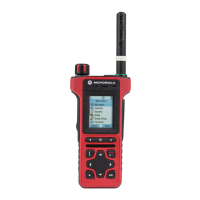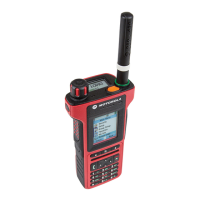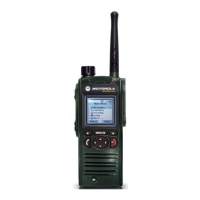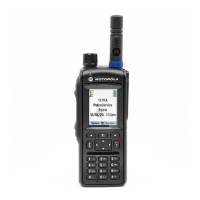Mobility Services 2-31
March 2009 Chapter 2 - MTP850 Ex/MTP810 Ex Product Information Manual 6866588D21-D
terminal is provisioned to not require PD user authentication, it will operate without any user
authentication if the TE2 application refuses to accept CHAP or PAP. However, if the terminal is
provisioned to require PD user authentication, it will reject the PDP context activation.
Note: If the SwMI does not agree to the authentication method (for example: PAP), the SwMI can
reject it.
9.13 Voice + Data Service and Feature Interaction
9.13.1 Voice Service Interaction
In Voice & Data Mode, if a voice service causes the terminal to move to the traffic channel, the
terminal will terminate any active packet data transmission or reception, and suspend packet data
service. The data service will resume when the voice service ends.
9.13.2 SDS Interaction
A terminal will accept any downlink SDS message received on the PDCH.
A terminal is capable of sending uplink SDS messages on the PDCH.
10 Mobility Services
10.1 Main Control Channel Frequencies
The terminal is capable of finding a wide range of main control channels. This is done by
maintaining stored lists of carrier frequencies which are scanned in order.
1. A dynamic list of up to 32 discrete entries that is maintained only by the terminal software.
2. A static list of up to 32 discrete frequencies specified by the operator that can be pre provi-
sioned. The system operator can modify this list via the programming tool.
3. A frequency range specification, using a specific offset, that can be preprogrammed in the
factory. The system operator can modify this range via the programming tool. The terminal will
scan all frequencies in 25kHz intervals in the specified range.
4. An additional frequency range specification as above. Having 2 separate range specifications
allows for 2 non-contiguous blocks of frequencies or 2 different offsets.
10.2 Multi-System Operation
In this release full migration is not supported. However, multi system operation is supported as
described below.
10.2.1 List of Allowed Networks
The terminal holds a list of up to 100 allowed network identities (MCC/MNC combinations) that are
considered ’friendly’ networks. The first network in this list must be the terminal’s home network.
Each network can have an associated name that can indicate to the user which network it is.
The terminal will be capable of performing initial cell selection and registration on these Networks -
and only these Networks. Registration on any of these networks will be performed using the
terminal’s ISSI and without migration signalling. The same ISSI will be used on all networks.
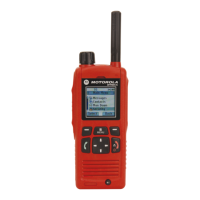
